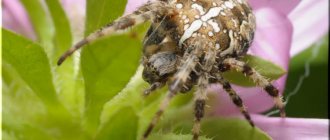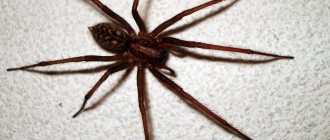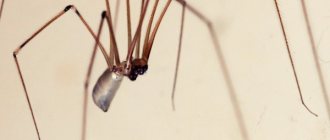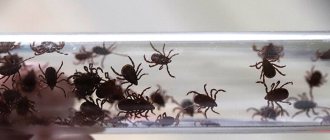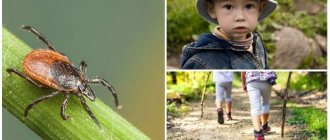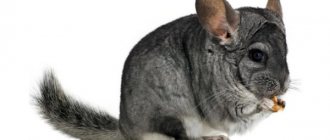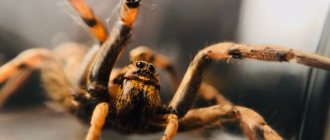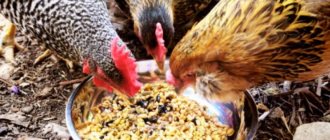Root pests of cultivated plants are the most insidious insects. Gardeners and vegetable gardeners cannot always notice or anticipate their appearance in a timely manner, and only by stunted growth can root damage be diagnosed.
By sucking the juice and boring through the rhizomes, insects deprive the plants of the opportunity to receive nutrients from the soil. Gradually, foliage and young shoots die off, plants wither and die.
Getting rid of multiplying pests is quite difficult. The easiest way to protect beds and flower beds is preventative treatment of the roots before planting.
Click beetle larvae
Click beetles are a widespread family of insects, numbering a significant number of genera and species. Among them there are many root pests. For example, black, shiny, sowing click beetle. As well as mixed species that can feed on seeds and shoots.
Larvae (wireworms) spend most of their lives in the ground. Digging horizontal and vertical passages, they actively move in search of food. The development cycle of larvae is very long - from three to five years. All this time they eat up the roots of plants. When the soil freezes, wireworms climb into its deeper layers. And with the onset of spring they move to the surface. In the first year of development, the larvae cause minimal damage to cultivated crops, feeding on weed rhizomes. From the second year they show interest specifically in agricultural crops.
The sowing type of insects harms grains, peanuts, sunflowers, and beets. The bread eater feeds on cereal crops. The steppe species is omnivorous - it is interested in any cultivated plants. The larvae cause significant damage to seedlings by eating seeds, roots and young plants. They eat away passages and cavities in tubers, leading to their rotting.
To prevent infection, it is necessary to apply ammonia fertilizers to the soil, and pour a manganese solution into the holes before planting. In spring, bait traps are placed on the site. For example, sprouted grains of cereal plants. Later, the grains are dug up along with the larvae and taken outside the beds. Tubers and seeds are treated with insecticides (“Fors”, “Cruzer”). The Aktara solution is applied directly to the soil (600 grams per hectare).
Thin people are evil
If, while digging the beds, you see a long larva swarming in the soil, similar to a worm, but with a hard body, know: this is one of the dangerous pests.
Wireworm (larva of click beetle). Yellow (brown or dark brown) creatures up to 15–17 mm long, living in the soil to a depth of 10–12 cm. Wireworms got their name due to the fact that their bodies are extremely hard and tough.
Wireworm. Photo: Nina Belyavskaya
The larvae feed on plant roots, seeds, seedlings, and seedlings and can cause great damage.
Article on the topic
Disguised! How to detect pests on berry plants
Prevention. In small areas, water with a solution of potassium permanganate (2–5 g per 10 liters of water). Sowing seeds not lower than the recommended depth with the simultaneous application of mineral fertilizers. Keeping the soil free of weeds. Loosening to a depth of 10–12 cm. Timely collection of mown grass. Early autumn digging of the soil (until mid-September).
Biological protection. In the spring, before sowing, lay pieces of raw potatoes, carrots or beets in the soil to a depth of 5–15 cm (with a mark of their location). After 3–4 days, destroy the baits with larvae.
Chemical protection : see table. Shading traps made from freshly weeded weeds treated with any of the approved contact insecticides help against adult click beetles.
False wireworm (darkling beetle larva). In appearance, it is a brother of the wireworm: only its first pair of legs is noticeably larger than the next ones, and its head is convex on top.
False wireworm. Photo: Nina Belyavskaya
Prevention and protection measures . Adding Vallar and Terradox, Contador maxi to the soil before planting. Use of shading poisoned baits.
Scoops
The cutworm family includes more than a hundred species that damage beds.
The larvae of some species live underground and damage plant roots. The most common are winter cutworm, marsh cutworm, borer cutworm, and wild cutworm.
The larvae feed on the roots of tomatoes, beans, cabbage, wheat, rye, sunflower, beets, onions and garlic.
Prevention measures include installing pheromone traps and eliminating weeds near the beds. These measures reduce the number of adult butterflies, and, therefore, the number of larvae.
To combat the larvae, it is necessary to carry out deep digging of the soil and crop rotation. Karate, Fury or Decis are used as insecticides for spring spraying. In summer, Fufanon and Dursban are used. No more than two treatments are carried out per year. When planting potatoes, “Bazudin” is added to the holes.
How to deal with the hoverfly in the garden?
The hoverfly, or large daffodil fly. Its larvae cause great damage to the bulbs of daffodils, tulips, hyacinths, and can also damage gladioli corms and iris rhizomes. The larvae, about 1 cm long, overwinter in the bulbs. These pests of plant roots eat away the bottom, and the bulb becomes soft. In the spring, weak plants with ugly, quickly yellowing leaves are formed from the affected bulbs; flowering usually does not occur. With severe damage, the entire inside of the bulb turns into a black, rotting mass.
Medvedka
Mole crickets are the main enemies of vegetable beds, found in many regions. Adult insects and their larvae damage plants.
Females are extremely fertile. Each of them is capable of laying up to 350 eggs per season. For laying, insects choose moist areas of soil. Embryos develop only at 100% humidity. Irrigated beds for this reason attract the largest number of insects.
Pests snack on underground parts of plants (damaged stems are easily removed from the ground). Most often, mole crickets love potato, cabbage and tomato beds. They feed on the roots and tubers of cultivated plants.
Preventive control measures include deep digging and setting up traps (fresh manure is often used, which attracts insects). Before planting seedlings, rhizomes should be treated with Aktara solution (1.5 grams per liter of water). "Medvedtox" is applied directly into planting holes and furrows.
How to deal with mole crickets in the garden?
The mole cricket genus belongs to the order Orthoptera. There are about 100 species of these insects in the world. In the same group with it are grasshoppers, crickets, and locusts. Other names are cabbage grass, earthen crustacean, spinning top. Their origin is connected with the characteristics of life, behavior, and appearance. It has a large body size, an unusual appearance, feels good in any environment - it is a real masterpiece of evolution.
- This is how you can fight a mole cricket. Take wheat grains (1 cup), boil them until soft, and then dry them, but not dry, and so that they are not wet and do not stick to each other. Place in a jar, add vegetable oil (2-3 tablespoons), mix. Then 1-2 tablespoons of metaphos are poured into the same jar - this is a contact insecticide. The grains prepared in this way are placed in the hole when planting seedlings. The cabbage plant will come to the smell, taste the poison - it will no longer have time for your seedlings.
- In the spring, scatter small piles of fresh manure around your yard. The mole cricket crawls there, makes burrows and lays eggs. After 10-20 days, look through the piles and destroy all the eggs.
Root aphid
The sucking root aphid is one of the most common types of pests of indoor plants.
Adult sciarids, known as fruit flies, enter rooms through open windows. Female flies lay eggs in flower pots. Young aphids suck sap from roots
flowers, which is why they begin to lag in growth and often die.
Infected soil can be brought into the house from a store or a plant can be purchased along with pests. In moist soil, aphid colonies reach impressive sizes. Also, reproduction is provoked by watering with water from the aquarium and excessive application of organic fertilizers.
To destroy the colony, watering the soil in pots with a solution of Decis or Inta-vir is used. Adult flies are caught using sticky tapes or poisoned with dichlorvos aerosols.
Control of soil pests.
Soil pests.
Every gardener has encountered a situation when planted seedlings grow well and suddenly begin to wither and disappear.
From the outside, there are no visible causes of trouble; it is hidden from view.
Garden and vegetable plants are susceptible to attacks by soil pests and parasites.
Insect larvae, laid by adults in the autumn, develop in the soil from 3 to 5 years.
In the spring, along with the plants, pests awaken and begin to feed intensively,
They eat tubers, bulbs, roots, that is, they damage the underground part of plants.
Garden soil pests, ways to combat them
Soil parasites include larvae:
- May beetle;
- click beetles;
- wireworm;
- false wireworm;
- cutworm caterpillars;
- Khrushchev;
- mole crickets;
- ants;
- onions;
- cabbage fly;
Pests cause damage to the root system and greenery. They eat up tubers, root vegetables, seeds; they gnaw on various parts of plants; they damage leaves;
The result of their vigorous activity is the death of vegetation, the absence or a significant reduction in yield.
The appearance of garden pests requires taking effective measures and providing effective assistance to useful crops.
To protect against garden pests, use strong chemicals or milder effects, agrotechnical biological products and traditional methods.
The use of chemicals is appropriate in difficult, neglected places; it can more effectively get rid of uninvited guests for a long time, but requires extreme caution. Folk remedies and biological preparations for pest control are considered safer for plants, but with a short-term effect.
An integrated approach of biological and chemical effects allows you to obtain the most pronounced and lasting results.
What a gardener should do when the spring season arrives
Use three methods of tillage in a comprehensive manner:
- Chemical (using insecticidal preparations).
- Biological (based on biological products with nematode larvae).
- Folk methods (grandmothers' experience).
1. Chemical (insecticides) method of protection
The most effective way to combat beetle larvae is the use of insecticidal preparations, aimed at protecting the root system of plants.
Advantages of using insecticides:
- They have a systemic effect (they reach pests through the soil and treated vegetation), and act comprehensively on any soil pests.
- If dosages are observed, they do not have a toxic effect on plants.
- Moderate economical consumption, that is, low processing cost.
- Fast action, effective within 2-3 hours.
- Long lasting effect (the protective effect against mole crickets and cockchafers lasts for 2-3 weeks, and against wireworms, soil flies, cabbage flies and onion flies for the whole season).
All insecticides have a contact-intestinal principle of action.
The drug spreads through the root system throughout all plant cells; when the root system is bitten, the larva instantly dies.
Processing method
1 way:
Before planting seedlings, treat the roots with the prepared mixture, an insecticidal earthen “mash” (a mixture of a solution of the drug with soil).
Pour some water into the container, pour the granules into it and, while stirring constantly, add soil.
Stir the created mixture until a homogeneous pasty mass is obtained.
Dosage: 10 grams of the drug per 1 liter of earthen “chatter”.
It is more effective to soak the root system before planting, in this composition - 0.5-1 hour.
Dilute the remaining working solution with water in a 10-fold proportion and water the seedlings at the root, after planting in the ground.
Method 2:
Insecticidal preparations are applied superficially into the soil, followed by embedding to a depth of 5-10 centimeters.
The dosage of surface treatment is 50 grams of the drug per 10 square meters.
Granules added to moist soil quickly dissolve, and the effect of the drug becomes apparent after a few hours.
In the same way, re-treat 25-30 days after planting the plants in the ground.
Recommended drugs:
- Terradox
- Initiative
- Vollard
- Zemlin
- Bazudin
- Antikhrushch
- Aktara (analogues: Cruiser, Tiara, Eforia)
The drug Aktara and its analogues can be used both when watering the root system and when spraying the above-ground part of the plant (simultaneous elimination of pests living on the vegetative part of the plant and soil pests). The moment of application of this drug will not be important; it will spread automatically on its own, from any point of application throughout the entire plant.
Biological method of protection
A method of getting rid of insect pests by using biological preparations that contain natural nematode worms, pathogenic bacteria or fungi.
Especially against cockchafer larvae, it is better to use preparations containing nematode eggs that feed on the pest larvae.
Among the drugs used are Nemabact, Etonem-F.
They are applied to the soil during morning or evening watering, at a temperature of plus 10-26 degrees. The biological product contains up to 5 million nematodes per 1 gram of its weight, the proportion of preparation of the working solution is 1:100.
After the drug enters the soil, the nematode larvae are inactivated (nematodes without feeding can exist in the soil for more than 2 years).
When a pest insect appears nearby, the larvae become active and invade the insect’s body.
After penetrating the insect, the nematodes release symbiotic bacteria into it, killing it fatally; the insect dies after 1-3 days.
Moreover, inside the infected insect, nematodes reproduce and grow, after which, within 8-15 days,
Thousands of new invasive larvae emerge from the insect’s body, capable of infecting pests.
In addition, you can use:
the drug "Boverin" (contains live spores of the fungus Beauveria bassiana), it is preferable to use when the number of larvae in the soil is not very numerous.
“Fitoverm” and “Aktofit” are biological insecticides (can be sprayed over the vegetative parts of plants).
“Metarizin”, “Mikorad INSEKTO”, “Biodischarge”, “Entocid” (based on the entomopathogenic fungus Metarhizium anisopliae), germinating and parasitizing in the body of the larva, causes mycosis and death.
All biological products are absolutely harmless to humans and pets and do not harm the environment.
Folk methods.
- Collecting beetles by hand;
- Installation of feeders to additionally attract birds to the site;
- Creating traps from flat containers (basins) with bait (coat the edges of the container with sticky glue, that is, make so-called “trapping belts”);
- Using the “Ammonia water” solution (ammonium nitrate 0.2 kg per 10 liters of water, water the beds 2 months before planting, then dig up);
- Watering the beds with a solution of ammonia (0.5-1 tbsp/10 l of water);
- Planting garlic and other herbs along the edges of the garden bed.
“Folk” methods of combating soil pests are milder in impact, they contribute to a more natural, safe improvement of the garden. It all depends on the complexity of the situation, time and places of application.
. The choice is yours, great harvests!
Cicadas
Cicadas feed on the sap of the plants on which they settle. Several hundred species of pests of this family live in the middle zone.
Eggs are laid by females in the root zone in early summer. The emerging larvae actively suck sap from the roots and stem. This leads to weakening of the plant and stunted growth, as well as a tendency to disease. Leafhoppers transmit many viral diseases that lead to plant death.
Pests feed on a variety of cultivated plants: strawberries, parsley, carrots, cucumbers, fruit trees and berry bushes.
For control, spraying with a solution of “Aktara”, “Karate” or “Zeon” is used.
Enemy No. 3 - whitefly: what harm does it cause and can it be destroyed?
Every summer resident knows that whiteflies are frequent garden pests, partial to a number of vegetable crops. The insect's favorite delicacy is pumpkin, cucumbers, tomatoes and squash. It is not difficult to detect whiteflies in a garden or greenhouse. Visually, these are small insects with a yellow body, two pairs of wings with a characteristic white waxy coating.
Whitefly larvae are pale green in color with an oval body, a small pile of hair and threads at the base of the abdomen. Adult females leave oviposition on the underside of the leaves in the shape of a ring. The larvae suck the juice from the leaves and contaminate them with excrement. The result is sooty fungus on the surface of the leaf and the death of the plant over time.
Chemical preparations considered to be the most effective against whiteflies are: “Aktofit”, “Gaupsin”, “Vermicide”.
Weevils
Root
Root weevils feed mainly on strawberries and raspberries, significantly reducing the yields of these berries.
They have high fertility (up to 500 eggs). Larvae at any stage of development actively eat up the root system of plants.
In addition to the spring clutch, there is a summer clutch, the larvae from which go to winter.
The lifespan of adult insects is two to three years, and during this time they retain the ability to reproduce.
To destroy pests, spraying with karbofos or “Inta-vir” is carried out during the flowering of strawberries and raspberries.
Bark weevil
The bark beetle weevil is an active pest of fruit plants. Most often it is found on apple trees, quince, plums, cherry plums, apricots, and cherries.
Insects lay eggs directly in the rhizomes of plants, having previously made holes in them. Fertility up to 120 eggs per season. The hatched larvae first feed on the bark, then bite into trunks and branches. Most often, weevil colonies favor young gardens. Frail trees begin to hurt. Damaged branches dry out and break off.
To prevent beetle infestation, pruning and burning of dried branches is used. At the beginning of active flight of pests (approximately in the first ten days of May), trees are sprayed with Metaphos or Metathion. Chlorophos is not used against this pest due to its low effectiveness.
How to deal with flea beetles in the garden?
When flea beetles appear, plants are pollinated using sifted wood ash, tobacco dust (in equal proportions) and dew.
Tips for the garden, vegetable garden and flower garden
Garlic is turning yellow: what to water and feed in June?
Feeding apple trees in June
How to increase your strawberry harvest tenfold
And one more recipe for an old, undeservedly forgotten means of combating a wide variety of insects:
- In an enamel or metal container with a capacity of at least 5 liters, boil 1-2 liters of water, dissolve 200 grams of laundry or green soap in it and bring to a boil, after which 200 grams of kerosene are added.
The mixture is forced to boil two or three times, removing from the heat when it foams above the level of the pan. The resulting emulsion concentrate is diluted with warm (30-40°) water to 10 liters.
- But it’s more effective: plant repellent plants nearby: catnip, peppermint, wormwood and medicinal wormwood, tobacco, tansy, head and leaf lettuce.
Ash variegated bark beetle
Ash variegated bark beetles are pests of apple, pear, walnut, olive, oak, maple and lilac trees.
Adult beetles overwinter in the bark of root zones below the soil level. Larvae and adults gnaw irregularly shaped tunnels (called mines) in the roots, as well as thicker trunks and branches. More often, insects damage weakened trees, causing significant damage to gardens and forests.
Control measures include timely cleaning of the garden and forest from infected trees and attracting insectivorous birds. During active flight, the lower part of the trunks, where bark beetles accumulate, is treated with insecticides.
Insect parasites of Trichogramma
These are small (less than 1 mm long) parasitic insects of the family Trichogrammatidae of the order Hymenoptera. In total there are more than 200 species.
As you can see in the photo, the body of these insects useful for the garden is dense, wide, yellow, black or brown:
Trichogramma have short club-shaped antennae, with ringlets at the base of the first segment of the flagellum.
Adults feed on flower nectar. Trichogramma destroy insects by laying their eggs in the eggs, larvae and body of adult pests. Trichogramma larvae, which develop in the egg, pupate in it, after which adult individuals fly out of the pest egg.
Trichogramma are entomophagous insects. Trichogramma vulgaris is bred in biological laboratories using grain moth eggs. Trichogramma is used to protect cultivated plants from lepidopteran pests. In addition, Trichogramma is also used for biological protection against codling moth, cabbage moth and other “uninvited guests” in the garden.
Since Trichogramma is used mainly to protect trees from the codling moth, this entomophage, bred in laboratory conditions, is released into the garden near apple and pear trees. In order for Trichogramma to take root in a new place, coriander, dill, lettuce, cilantro, horseradish, fennel, and celery are planted in advance.
These entomophages are bred to protect plants as follows. Special bowls are placed at the bottom of a wooden box, called a vivarium, which has a glazed front wall and a sleeve (it is made of thick, dark-colored fabric). Inside the box there are 4 glass shelves. The bowls are placed near the back wall of the structure and sitotrog eggs are poured into them, from which the trichogramma should appear. Each shelf is slightly moistened, after which the egg sieve is poured onto the surface of the egg, then pushed into the grooves towards the front wall.
The vivarium is installed with the front wall facing the light, but so that direct sunlight does not fall into it. After some time, Trichogramma females will accumulate at the front wall of the box and colonize the Sitotroga eggs placed in it.
This selection of photos presents beneficial insects, the names and descriptions of which you have read on this page:
May beetle larvae
May beetle larvae are the most common pests of gardens and vegetable gardens.
They damage berry, fruit and often ornamental plants. Almost all garden crops also suffer from beetles. The larvae are voracious and readily eat roots or bite into tubers (for example, potatoes). The accumulation of beetles and their larvae can cause the death of young and old, already developed trees.
The larvae overwinter deep in the soil, emerging to the surface with the onset of spring warming.
They live up to five years.
Control measures include digging up the soil under trees in the spring - at this time the larvae are at a depth of five to twenty centimeters. To destroy adult beetles, spraying with Intra-vir, Bitoxibacillin, and Karate is used. Treatment is carried out during the flowering period of trees.
Centipede larvae
Centipede larvae are one of the main pests of lawns.
Mosquitoes of this species lay eggs in the turf in the second half of summer. Rainy weather promotes egg laying. The multiplied larvae go into winter, and in early spring they cause the greatest damage to the lawn, eating up the roots of the grass. Lawns lose their aesthetics - yellowed areas with wilted vegetation appear on them. Patches of damaged grass are especially noticeable in dry spring and summer.
To destroy the colony, lawns are watered in the fall with solutions of insecticides containing hexachlorane .
The oak flea beetle can be recognized by its half-dried purple leaves that easily fall off the branches. One of the most favorite delicacies of leafminer moths are chestnuts. If you also have these trees, then you can find out how to protect them from this pest by reading this article.
Acetamiprid is an insecticide that is non-toxic to bees. Read a detailed description of this substance at https://stopvreditel.ru/rastenij/borba/insekticidy-protiv-vreditelej/acetamiprid.html link.
Flying garden pests
The most popular garden beetles pests are:
- sawfly - an insect that looks like a small fly, eats leaves and weaves nests among trees (apricot, cherry, etc.) and shrubs with a web; chemicals are used for destruction;
- weevil - parasitizes raspberries and strawberries; larvae emerge from the laid eggs, gnaw the buds and eat the stalks of the plants, and live directly in the flowers;
- moth - the danger is posed by a small caterpillar that moves by squeezing and unclenching its body, attacks young shoots, sucks out all the plant juices from them, special traps and chemical treatment are used against it, and birds that feed on them also help;
Moth
- cutworm is a nocturnal moth that eats all parts of plants; one of the popular methods of combating cutworms is planting wormwood, as well as insecticides;
- mealybugs and rootbugs - such white insects live on the stems and leaves of garden crops and ornamental flowers, feeding on plant juices;
- thrips - black bugs in the ground at the dacha or in the garden, hiding under the leaves, a silvery coating appears on the leaves of the affected plants;
- gooseberry moth - a small butterfly that lays eggs during the formation of berries, after which the hatched larvae begin to entangle berries and fruits on trees in a web;
- leaf beetles and rattle beetles - light brown or light brown flying beetles up to 1 cm in size, feed on leaves, buds, flowers and stems of garden and ornamental plants;
- blue beetles in the garden are most often the alder leaf beetle, whose food source is alder, or the spanka beetle, which gnaws the leaves of trees and potatoes;
- meadow moth - lays eggs on plants, and the hatched larvae quickly begin to eat leaves, ovaries and even the bark of trees, they damage the fruits and seeds of plants.
To combat the listed pests, it is recommended to use not only folk remedies (decoctions of tomato tops, tansy, wormwood, capsicum, garlic arrows, etc.), but also insecticidal agents: Corado, Alatar, Iskra, Commander, Fury, Kinmiks, etc.
Centipedes
Centipedes are natural orderlies of the garden and vegetable garden. However, their accumulation becomes a big problem.
The main diet of insects is the remains of rotting vegetation. But when there is a lack of food, they begin to become interested in various cultural plantings. For example, strawberries.
The safest way for humans to fight is to set up traps. Near the beds, holes are dug into which wire cages with carrots or potatoes are placed.
Large colonies of insects can be destroyed by treating the soil with a solution of Aktellika, Fitoverma or Aktary.
In strawberry and strawberry beds, treatment is carried out before the berries ripen.
Earthworms
Earthworms are the main soil formers that contribute to soil aeration and moisture.
They feed on plant remains, but pose some danger to immature garden and flower crops. Actively moving in the ground, worms can damage thin roots and cause plants to dry out. Indoor flowers can suffer the most from worms.
It is almost impossible to fight these insects in open ground. But it’s quite easy to protect indoor flowers from their effects. To do this, place the pot in a bowl of water for eight minutes. The worms begin to choke and crawl out on their own.
